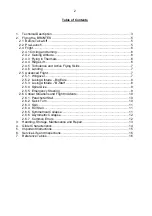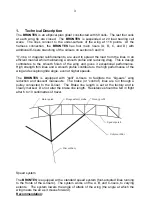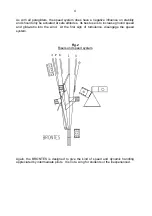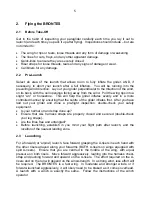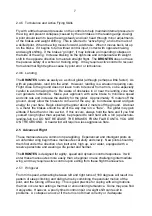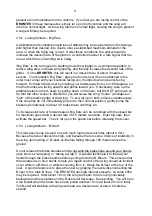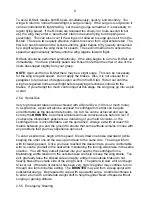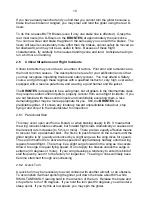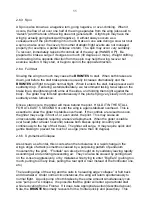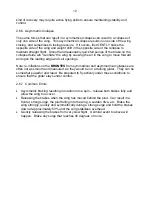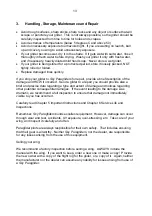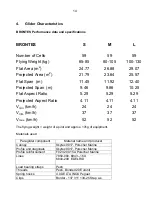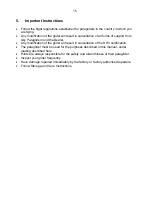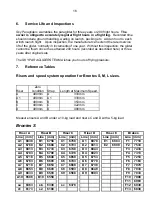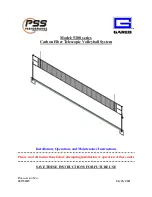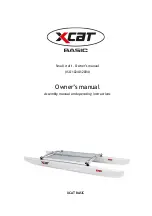
9
To exit a B-Stall, release both B-risers simultaneously, quickly, and smoothly. The
wing will return to normal forward flight, a surge is likely. If the surge is too dynamic it
can be controlled with light braking. Let the wing surge somewhat, it is necessary to
regain flying speed. If the B-risers are released too slowly 3 or more second to full
up), the wing may enter a “parachutal” stall (not resume flying, but dropping as a
parachute). This can also occur if the wing is not allowed to surge upon exit from the
B-stall. There are two equally effective means to recover from a parachutal stall. The
first is to push forward on the A-risers until the glider begins to fly (usually announced
by a slight surge as the wing dives for speed). The second method is to activate the
speed bar approximately halfway until the wing regains forward flight.
B-Stalls should be performed symmetrically. If the wing begins to turn in a B-Stall, exit
immediately. You have probably pulled one B-riser more than the other or one of the
risers has slipped slightly from your grasp.
NOTE
: Upon exit from a B-Stall there may be a slight surge. This can be necessary
for the wing to regain speed. Do not apply the brakes. Also, it is not unusual for a
paraglider to turn about 45 degrees upon exit from the B-Stall. Ride it out until the
wing has regained normal level flight before applying directional control with the
brakes. If you attempt too much control input at this stage, the wing may go into a spin
or stall.
2.5.4 Spiral Dive
Very high descent rates can be achieved with a Spiral Dive: (10 m/s or much more).
In a spiral dive, a pilot will also be exposed to centrifugal force that can be quite
uncomfortable as the descent rate builds. Up to 8 Gs can be achieved and can be
born by the
BRONTES
, but almost all pilots will lose consciousness before 6 Gs! If
you become disoriented, experience a narrowing of your field of visions, or the
centrifugal force is uncomfortable, exit the spiral dive. Always exit with at least 150
meters between you and the ground to ensure that some altitude remains to cope with
any problems that you may experience upon exit.
To enter a spiral dive, begin at trim speed. Slowly draw one brake downward (while
keeping the other one all the way up) and lean to the same side. The wing will turn
with increasing speed. Once you have reached the descent rate you are comfortable
with, re-centre yourself in the seat while maintaining the turning side brake in the same
location. You will find yourself pushed into your seat by the centrifugal force.
Maintaining a little tension on the outside brake will help to keep the wing stable. Too
exit, gradually raise the braked side and apply a little more outside brake (do not
heavily brake the outside side of the wing to exit). The glider will slow a bit and begin
to level out. If the rate of descent has been very high, the glider may continue to turn
through one full turn before exiting. The
BRONTES
may exit from a deep spiral with
substantial energy. Be prepared to cope with a powerful surge. Another technique is
to enter a turn with a moderate weight shift to help the glider bleed off speed without
surging or gaining altitude.
2.5.5 Emergency Steering
Summary of Contents for BRONTES
Page 18: ...18 ...


